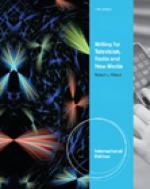|
This section contains 2,149 words (approx. 8 pages at 300 words per page) |

|
Radio includes a broad group of technologies that utilize electromagnetic radiation (also called radio waves) to transmit and/or receive information. Examples of radio technologies can be drawn from numerous industries, applications, and end users. A partial listing would include radio (and television) broadcasting, maritime communications, radio navigation, cellular telephony, satellite communications, numerous military applications, wireless computer networking, noncontact identification systems, military and meteorological radar, global positioning systems, and radio astronomy (see Figure 1).
What all these systems have in common is the conversion of electrical energy from one form into another, specifically, from electrical currents bound in conductive materials such as wires and cables into unbounded electromagnetic radiation that is free to propagate through space, the atmosphere, or another nonconducting medium. This is the process of radio transmission. Radio reception is the reverse process, in which incoming electromagnetic radiation is converted into electrical currents in the antennas, wires...
|
This section contains 2,149 words (approx. 8 pages at 300 words per page) |

|


